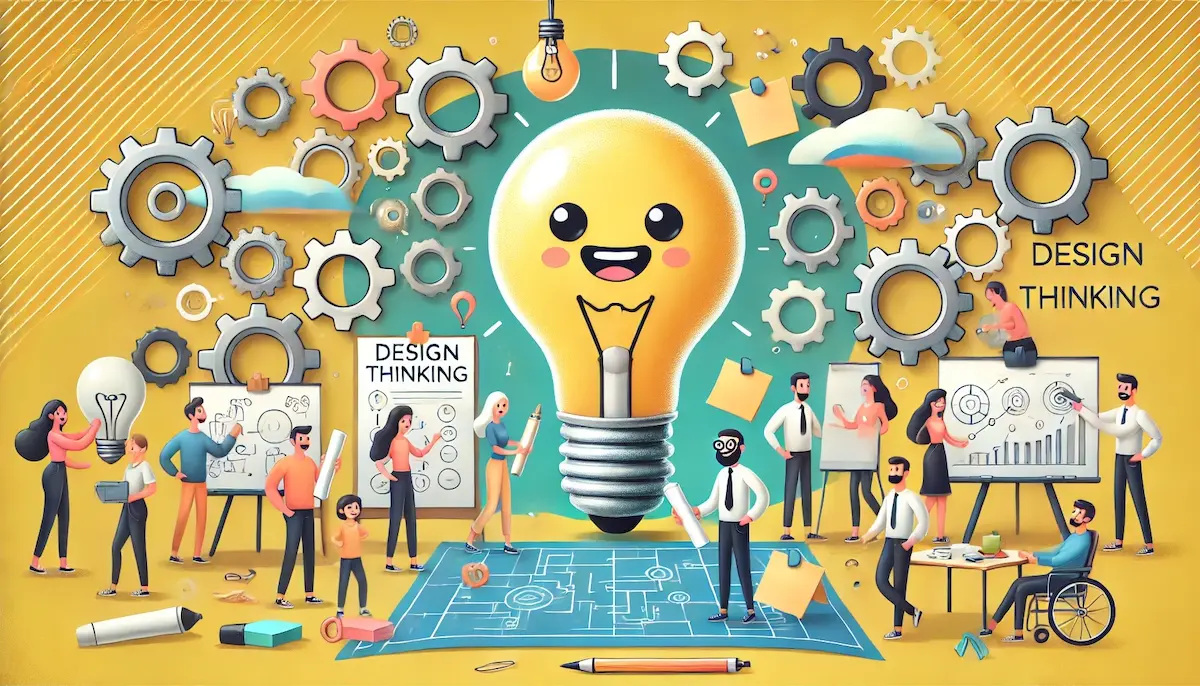Design thinking is a user-centered approach to problem-solving that focuses on understanding users’ needs and creating innovative solutions. It is a holistic and iterative process that encourages creativity, collaboration, and empathy. Design thinking is widely used in various fields, including business, education, and engineering, to address complex challenges and develop human-centered products and services.
What is Design Thinking?
Design thinking is a methodology that involves five key stages: Empathize, Define, Ideate, Prototype, and Test. It emphasizes a deep understanding of the user’s experience, iterative testing, and refining solutions based on feedback. This approach helps teams to think creatively and work collaboratively to solve problems effectively.
The Importance of Design Thinking
Design thinking is crucial for several reasons:
- User-Centered Solutions: By focusing on the needs and experiences of users, design thinking ensures that solutions are relevant and effective.
- Innovation: It encourages creative problem-solving and out-of-the-box thinking, leading to innovative solutions.
- Collaboration: Design thinking promotes teamwork and cross-disciplinary collaboration, leveraging diverse perspectives.
- Iterative Process: The iterative nature of design thinking allows for continuous improvement and refinement of ideas.
- Problem Understanding: It helps teams to thoroughly understand the problem before jumping to solutions, leading to more accurate and sustainable outcomes.
Key Stages of Design Thinking
Design thinking typically involves the following five stages:
1. Empathize
The first stage involves understanding the users and their needs through research and observation. Techniques include:
- Interviews: Conducting one-on-one interviews to gather deep insights into users’ experiences and challenges.
- Surveys: Distributing questionnaires to collect quantitative data from a larger audience.
- Observation: Watching users interact with products or services to identify pain points and behaviors.
- User Personas: Creating detailed profiles representing different user types to guide the design process.
2. Define
In the Define stage, insights gathered during the Empathize stage are synthesized to articulate a clear problem statement. This involves:
- Problem Statement: Defining the core problem based on user needs and insights.
- Point of View (POV): Framing the problem from the users’ perspective to ensure the solution is user-centered.
- Journey Maps: Mapping out the user’s experience to identify key pain points and opportunities for improvement.
3. Ideate
The Ideate stage involves generating a wide range of ideas and potential solutions. Techniques include:
- Brainstorming: Encouraging free-flowing ideas without judgment to foster creativity.
- Mind Mapping: Organizing ideas visually to explore connections and relationships.
- Sketching: Creating quick sketches to visualize ideas and concepts.
- SCAMPER: A technique that involves modifying existing solutions to generate new ideas (Substitute, Combine, Adapt, Modify, Put to another use, Eliminate, Reverse).
4. Prototype
In the Prototype stage, ideas are turned into tangible forms that can be tested and evaluated. This involves:
- Low-Fidelity Prototypes: Creating simple and inexpensive models or sketches to quickly test ideas.
- High-Fidelity Prototypes: Developing more detailed and functional prototypes that closely resemble the final product.
- Storyboarding: Using a sequence of drawings to visualize the user’s interaction with the product or service.
5. Test
The Test stage involves gathering feedback from users to refine and improve the prototypes. This includes:
- User Testing: Observing users as they interact with the prototypes to identify issues and gather feedback.
- Feedback Sessions: Conducting discussions with users to understand their experiences and suggestions.
- Iterative Refinement: Making improvements based on feedback and retesting until the solution meets user needs effectively.
Benefits of Design Thinking
Design thinking offers numerous benefits:
- Enhanced User Experience: Solutions are tailored to users’ needs, resulting in more satisfactory and effective products and services.
- Increased Innovation: Encourages creative thinking and exploration of unconventional solutions.
- Better Collaboration: Fosters a collaborative environment where diverse team members contribute to the problem-solving process.
- Efficient Problem-Solving: Helps identify the root cause of problems and develop targeted solutions.
- Risk Mitigation: Iterative testing and refinement reduce the risk of failure by ensuring solutions are validated by users.
Conclusion
Design thinking is a powerful methodology for creating user-centered, innovative solutions to complex problems. By following its iterative process and focusing on empathy, collaboration, and creativity, teams can develop products and services that truly meet users’ needs.
Blockfine thanks you for reading and hopes you found this article helpful.
